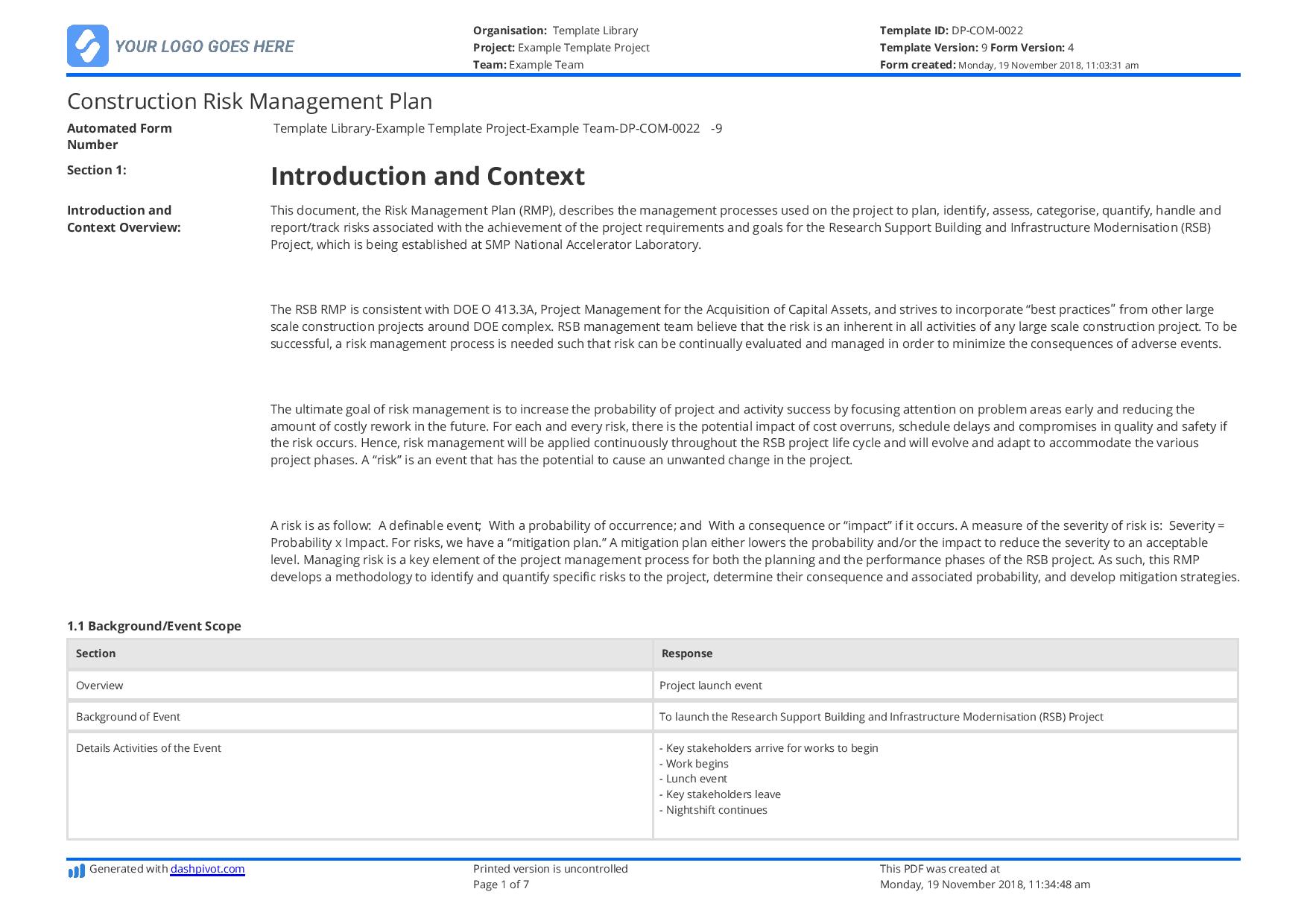


Risk assessment: Prioritize the risks based on the severity of the impact they could have on your project.Risk identification: Before a project begins, your project team needs to identify risks unique to the project, like labor shortages or adverse weather conditions. Environmental risk includes any incident that could impact workers’ environments, including natural disasters or issues like site contamination.Įvery construction company’s risk management process will vary, but there are four key components to a risk management framework you should consider:.Insufficient planning can have severe financial ramifications. Project risk refers to factors that could impact project management, including ineffective task management, supply chain issues, and scheduling issues.When violations occur, businesses, contractors, and individual contributors can face immediate legal action that may lead to long-term legal and financial consequences. Legal risk includes issues with contracts and non-compliance with rules and regulations, e.g., labor law violations.This includes increased material costs, investing beyond what your company can afford, and inadequate allocation of project budget. Financial risk is any factor that could negatively impact profitability and cash flow in a construction project.Companies need to find a Construction Safety Management system that fits their need This can be anything from sprains and strains to accidents with equipment that occur on the construction site. Safety risk refers to injuries, fatalities, or illnesses that occur on the job.In general, there are five different types of risks your project team should consider: Whether it’s dealing with inflated materials costs or heightened safety concerns due to unfamiliar equipment, team members need to identify risks before they impact the project. Risk is around every corner in the construction industry. With an understanding of your project’s unique risks, the right technology, and a data-driven strategy, you can proactively manage risk for a seamless project undertaking. But risk management in construction goes beyond sheltering your team from physical harm: It helps mitigate any threat to a project’s success, from legal issues to scheduling errors.Īn effective risk management plan is critical as your organization takes on increasingly complex construction projects that involve more stakeholders and technologies. You would never walk onto an active construction site without a helmet, right? Similarly, construction companies would never begin a project without a risk management plan in place.


 0 kommentar(er)
0 kommentar(er)
